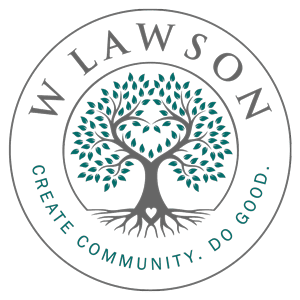
Navigating the Intersection of the Great Resignation
In today’s rapidly shifting landscape, we find ourselves grappling with three significant trends that are challenging the very core of our industries: The Great Resignation, The Great Retirement, and The Great Rejection. Each of these forces impacts not just the workforce, but also how we approach aging services, leadership transitions, and inclusivity in our communities. These trends aren’t isolated—they intersect, influencing one another and ultimately reshaping how we think about work, care, and inclusion.
The Great Resignation
First, let’s talk about the Great Resignation. Over the last few years, we’ve seen massive shifts in the workforce as droves of individuals leave their jobs, not just in specific industries but across the board. According to labor data, there are currently 11 million job openings—yet, astonishingly, we don’t have nearly enough unemployed people to fill those positions. The cause of this is multifaceted: from economic barriers to shifting cultural attitudes toward work and caregiving.
This exodus isn’t just a concern in traditional fields but is especially felt in sectors like caregiving, where there’s an urgent need for individuals to provide essential care for others. We’re left asking: how do we fill these gaps? One of the key answers lies in fostering greater inclusion and belonging within the workforce. The solution isn’t simply to recruit more people; it’s about making these spaces welcoming for those who have been historically excluded.
The Great Retirement
Now, consider The Great Retirement. Many leaders across various sectors, including the aging services industry, are facing a wave of retirements. This trend is not only reshaping organizational structures but also creating leadership voids that will be hard to fill. If we look at this from an industry perspective, we can see that there’s a growing concern about leadership succession. There aren’t enough individuals ready to step into those roles with the right skills and experiences, and many younger professionals are hesitant to fill these shoes.
This, too, is an inclusion issue. How do we create pathways for leadership that are diverse, equitable, and accessible to all? In my opinion, the Great Retirement is not just a matter of age—it’s about the diversity of perspectives and experiences that need to be cultivated for a more inclusive future.
The Great Rejection
Finally, we have The Great Rejection. More specifically, this is the rejection of age-based segregation. Many younger boomers and Gen Xers are increasingly rejecting the notion of living in age-segregated communities. Why would they want to move into a place where everyone is their age? They don’t want to be “surrounded by old people,” and they’re pushing back against the idea of communities that cater to a narrow demographic.
This Great Rejection is more than just an aversion to aging—it’s a reflection of the changing expectations people have about the communities they want to live in. People want environments that reflect diversity, inclusion, and vibrancy. They want communities where multiple generations and cultures coexist and thrive.
The Intersection of Inclusion and Longevity
At the heart of these three trends lies one core issue: inclusion. The Great Resignation has shown us that people are leaving because they don’t feel seen or valued. The Great Retirement is pushing us to reconsider leadership structures and who is fit to lead. The Great Rejection is urging us to rethink the spaces we create for people as they age.
Ultimately, the future lies in the connection between the inclusion economy and the longevity economy. We can no longer afford to think of these as separate concepts. Aging services and workforce diversity are inextricably linked. We’re dealing with both a labor shortage and an aging population that will only continue to grow, which means we have to get creative about how we provide care, develop leadership, and ensure that all people—regardless of age, background, or experience—feel included and valued.
A Call to Action: Making Inclusion Real
So, how do we respond? I believe it’s crucial that we ask ourselves: Are we ready to welcome diversity and inclusion into our organizations and communities? This is not just about getting people into the door. It’s about ensuring that they feel seen, heard, and valued once they arrive. And that requires uncomfortable but necessary internal reflection.
In practice, this might mean making changes to how we recruit, lead, and engage with people from all walks of life. It could involve reevaluating board compositions, challenging traditional norms, or being more intentional about creating spaces for those who have historically been excluded. It could even mean introducing new models of caregiving that take neurodivergence, mental health, and other diversity factors into account.
Conclusion: Change Starts with Us
Ultimately, the work ahead of us isn’t easy, but it is necessary. As leaders in aging services and beyond, we must decide whether we will continue to operate within the same old paradigms or step forward with bold, inclusive strategies that meet the needs of today and tomorrow.
We’re at a crossroads. We can either continue with the status quo and hope for the best—or we can step up and create the communities we’ve always wanted to see. It’s time to make inclusion and belonging not just a slogan, but a tangible, actionable goal for our future. The world is changing, and so must we.
Let’s commit to creating communities where everyone, no matter their age, background, or ability, can feel truly at home.


